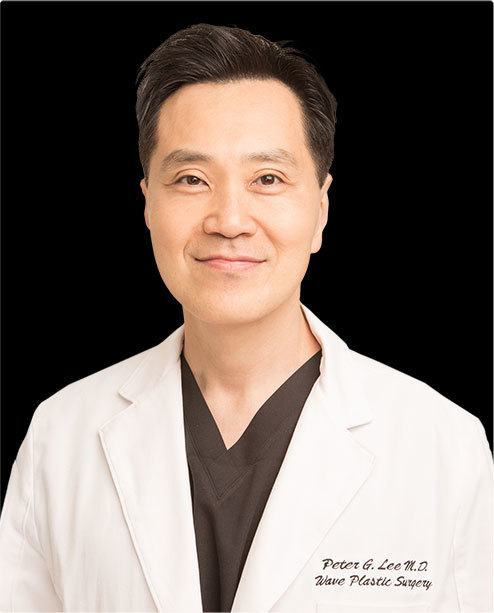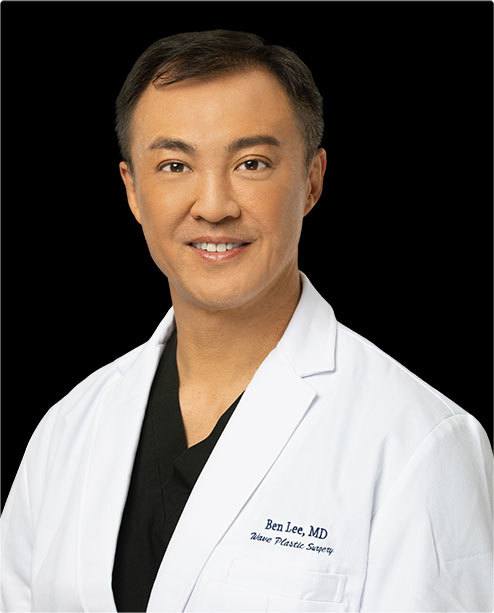Home » Surgical » Eye Procedures » Guide To Epicanthoplasty
Home » Surgical » Eye Procedures » Guide To Epicanthoplasty
Are you interested in changing the shape of your eyes? Do you ever see someone with big, beautiful eyes and think, “I wish my eyes were more like that?”
If so, we’ve got good news for you. Eye enlargement surgery, also known as epicanthoplasty, can help you achieve the eye shape you desire. This cosmetic procedure is designed to change or widen your eye shape, enhancing your overall appearance. But what exactly is epicanthoplasty, and who should consider this type of surgery? This guide will walk you through everything you need to know.
To figure out which type of epicanthoplasty is right for you, you’ll need to set up an appointment with a cosmetic eye surgeon. It’s important to choose a surgeon who is experienced in both procedures so you can achieve the best results possible.
Contact Wave Plastic Surgery today to schedule your consultation at 888-674-3001.
What are the benefits of an epicanthoplasty? For those looking to change their eye shape or enlarge their eyes, among other things, here are some advantages of this upper eyelid cosmetic procedure.
Epicanthoplasty can be a transformative procedure for those looking to improve the appearance of their eyes. If you want to change the appearance of your eyes in some way, there are various eye and eyelid surgeries to choose from. Understanding the details about these procedures, including epicanthoplasty, is essential to determine which surgery can best help you achieve your desired goals.
Let’s explore some detailed criteria to help you decide if you’re a good candidate for epicanthoplasty. In our experience at Wave Plastic Surgery, you’re likely a good candidate for epicanthoplasty surgery if…
If you wish to enhance the overall look of your eyes, making them appear larger, more open, and vibrant, epicanthoplasty could be the right choice. This surgery can specifically address issues such as eyes that look tired or less alert, helping to create a more youthful and awake appearance.
Epicanthoplasty is a detailed and precise cosmetic surgical procedure that requires careful preparation, skilled execution, and diligent aftercare. At Wave Plastic Surgery & Aesthetic Laser Center, our highly skilled and experienced surgical team is dedicated to delivering exceptional results. Our board-certified plastic surgeons, led by Dr. Peter Lee, have extensive expertise in performing epicanthoplasty, ensuring that each patient receives personalized care and achieves natural-looking results.
Here’s an in-depth look at what to expect before, during, and after the surgery.
Proper preparation is essential to ensure a successful surgery and smooth recovery. Here are the key steps to take before your epicanthoplasty:
The epicanthoplasty procedure varies slightly depending on whether you are undergoing medial or lateral epicanthoplasty. Here’s a general overview of what to expect:
Epicanthoplasty typically involves local anesthesia, which numbs the eye area while keeping you awake. This approach reduces risks associated with general anesthesia and allows for a quicker recovery. However, in some cases, mild sedation may be used in conjunction with local anesthesia to help you relax during the procedure.
Local anesthesia usually wears off after an hour, but you may experience some tingling and numbness for a few hours post-surgery. Generally speaking, you don’t need to do much to prepare for local anesthesia. During the consultation, you’ll need to inform your doctor if:
NOTE: If you feel pain during the procedure, you should tell your doctor right away, as this usually indicates that they need to give you a higher dose. Generally speaking, local anesthesia is very safe, but there are some side effects to be aware of. Side effects include:
Generally speaking, the recovery process for eye enlargement surgery is pretty smooth. Most people experience some swelling and bruising around the eye, but this begins to subside after one week.
Any remaining swelling will gradually subside over the next eight to twelve weeks. Four to six days after surgery, you’ll need to return to the clinic or hospital to have your stitches removed.
Most patients return to work two weeks after surgery, but the recovery timeline is different for everyone. A few days after having your stitches removed, you’ll be able to wear makeup again.
Your surgeon will provide you with instructions on how to care for your stitches in the days following your surgery. Here are a few tips and things you may want to know:
Please note: This is not a substitute for seeking medical advice. If you have questions about the recovery process, please contact your healthcare provider as soon as possible to ensure a successful path to healing.
At Wave Plastic Surgery & Aesthetic Laser Center, we specialize in performing epicanthoplasty and a wide range of other aesthetic and anti-aging procedures. As one of the largest and most advanced plastic surgery practices in the United States, we provide outstanding outpatient services in a luxurious environment across multiple California locations, including Los Angeles, San Francisco, Orange County, Arcadia, and Rowland Heights. Our team of board-certified plastic surgeons, led by Dr. Peter Lee, is dedicated to delivering natural-looking results using cutting-edge technology. Accredited by the American Accreditation Association for Ambulatory Health Care (AAAHC), we ensure the highest patient care and safety standards.
We are committed to educating our patients about the procedures we offer, ensuring they have all the information needed to make an informed decision. If you’re considering epicanthoplasty
Ptosis is the weakening of the muscle that holds the upper eyelid open. This can result in the appearance of drooping eyelids, commonly known as droopy eyelids. There are a number of surgical methods used to correct ptosis. Epicanthoplasty and double eyelid surgery can correct ptosis by tightening and elevating this muscle. Contact our office today to schedule a consultation, and we can help you determine which eyelid procedure is best for you.
Ready for eye enlargement surgery? The first step when considering a cosmetic procedure like epicanthoplasty at Wave Plastic Surgery is always to schedule a consultation with a surgeon. During the consultation, your doctor will discuss your medical history and goals to determine if you’re a good candidate for the procedure.
Contact us to schedule a consultation with one of our experts. Call 888-674-3001
Give us a call today to schedule a consultation with one of the plastic surgery experts at Wave Plastic Surgery to learn more about the procedure and the thread face lift cost.

Dr. Peter is CEO and Chief Surgeon of WAVE Plastic Surgery Center with over 20 years of plastic surgery experience, overlooking 30K+ successful plastic surgery cases. He has mentored master surgeons around the world in state-of-the-art techniques, and has been inducted into the RealSelf 100 & 500 Hall of Fame.
His many accolades and shining results are evidence of Peter’s expertise.

Throughout 20+ years in aesthetic plastic surgery, Dr. Ben Lee has always been passionate about using his skills to impart a lasting, positive impact on the lives of his patients.
“Time and time again, I have witnessed dramatic improvements in a patient’s confidence and well-being after a relatively minor cosmetic or reconstructive procedure. As a surgeon, that brings me great joy.” — Dr. Ben Lee

With a focus on Upper Eyelid Surgery, Dr. Wong has a deep understanding of the unique anatomy of the eyelid which is critical in performing this highly technical and intricate surgery. She is experienced in approaching various specific eyelid characteristics for different ethnicities, especially Asian cultures.
She uses precise microplastic surgical techniques to enhance the natural shape and inherent beauty of your eyes, making them appear bigger and brighter.
Proudly using his creativity to help patients regain a sense of wholeness and confidence, Dr. Ben Lee takes a very patient-centered approach to care.
Wave Plastic Surgery